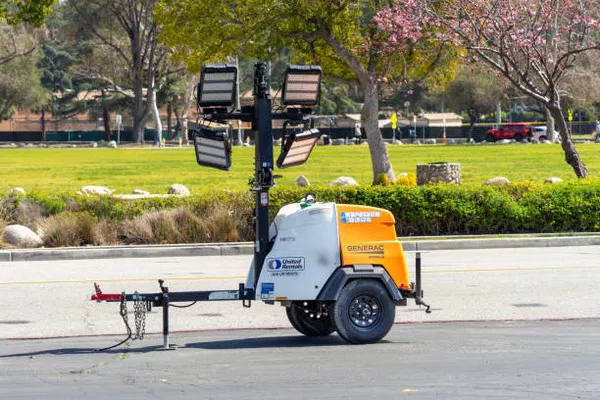In an era of increasing dependency on electricity, power outages can disrupt daily life, causing inconvenience, financial loss, and even safety concerns. Whole home generators have emerged as a reliable solution to mitigate the impact of power failures by providing continuous electrical power during outages. However, a common question among homeowners considering such an investment is: how long can a whole home generator run? Understanding the operational lifespan of these generators is crucial for making informed decisions regarding their installation and maintenance.
Types of Whole Home Generators:
Before delving into their operational lifespan, it’s important to differentiate between the various types of whole home generators available in the market:
a. Standby Generators: These generators are permanently installed outside the home and are connected directly to the electrical system. They are capable of automatically activating in the event of a power outage and can provide uninterrupted power for extended periods.
b. Portable Generators: Portable generators are smaller units that can be moved and connected to essential appliances using extension cords. While they offer flexibility, they typically have limited fuel capacity and runtime compared to standby generators.
Factors Affecting Runtime:
The operational lifespan of a whole home generator depends on several factors, including:
a. Fuel Type: Generators can be powered by various fuels such as diesel, natural gas, propane, or gasoline. The type of fuel affects both the runtime and maintenance requirements of the generator.
b. Generator Size: The power output capacity of the generator, measured in kilowatts (kW), determines its ability to sustain electrical loads. Larger generators with higher kW ratings typically have longer runtimes.
c. Load Demand: The electrical load placed on the generator directly impacts its runtime. Running essential appliances only, such as refrigerators and lighting, conserves fuel and prolongs runtime compared to powering the entire home.
d. Fuel Capacity: The size of the generator’s fuel tank or storage capacity for propane or natural gas determines how long it can run without refueling.
e. Maintenance: Regular maintenance, including oil changes, filter replacements, and system inspections, ensures optimal performance and extends the operational lifespan of the generator.
Operational Lifespan:
The operational lifespan of a whole home generator varies depending on the factors mentioned above. However, standby generators, which are designed for continuous operation, typically have longer lifespans compared to portable generators.
a. Standby Generators: On average, standby generators can run continuously for days or even weeks if properly maintained and fueled. Modern standby generators often feature advanced technologies such as automatic self-testing and remote monitoring, enhancing reliability and longevity.
b. Portable Generators: Portable generators have shorter runtimes compared to standby generators due to their smaller fuel tanks and lower power output. Depending on the size of the generator and the load demand, portable generators can run for several hours to a few days before requiring refueling.
Maintenance Tips for Prolonging Lifespan:
To maximize the operational lifespan of a whole home generator, homeowners should adhere to a regular maintenance schedule:
a. Follow Manufacturer Guidelines: Consult the manufacturer’s manual for specific maintenance requirements and schedule recommended service intervals accordingly.
b. Fuel Management: Use clean, quality fuel and stabilize gasoline for portable generators to prevent fuel degradation. Ensure adequate fuel supply for standby generators, and consider installing a fuel monitoring system for remote monitoring.
c. Regular Inspections: Conduct routine inspections of the generator, including checking for leaks, loose connections, and signs of wear. Clean air and fuel filters as needed to maintain optimal performance.
d. Load Management: Avoid overloading the generator by prioritizing essential loads and implementing load shedding strategies during extended outages.
e. Professional Servicing: Schedule professional servicing by certified technicians to perform comprehensive maintenance tasks such as oil changes, spark plug replacements, and system diagnostics.
Monitoring and Remote Management:
Advancements in technology have enabled the integration of monitoring and remote management capabilities into whole home generators:
a. Remote Monitoring: Many modern standby generators feature remote monitoring capabilities, allowing homeowners to monitor the generator’s status, fuel level, and performance remotely via smartphone apps or web portals.
b. Automatic Self-Testing: Standby generators often conduct automatic self-tests to ensure readiness and detect potential issues before they escalate. Regular self-testing enhances reliability and provides peace of mind to homeowners.
c. Alerts and Notifications: Remote monitoring systems can send alerts and notifications to homeowners and service providers in the event of a fault, low fuel level, or maintenance reminder, enabling timely intervention and troubleshooting.
See Also Small Generators: What Can They Power?
Conclusion:
Whole home generators serve as invaluable assets for homeowners seeking to maintain comfort, convenience, and safety during power outages. Understanding the operational lifespan of these generators is essential for making informed decisions regarding their installation, maintenance, and usage. Factors such as fuel type, generator size, load demand, and maintenance practices influence the runtime and longevity of whole home generators. By adhering to a regular maintenance schedule, implementing load management strategies, and leveraging monitoring and remote management technologies, homeowners can maximize the lifespan and reliability of their whole home generators, ensuring uninterrupted power supply when it’s needed most.

